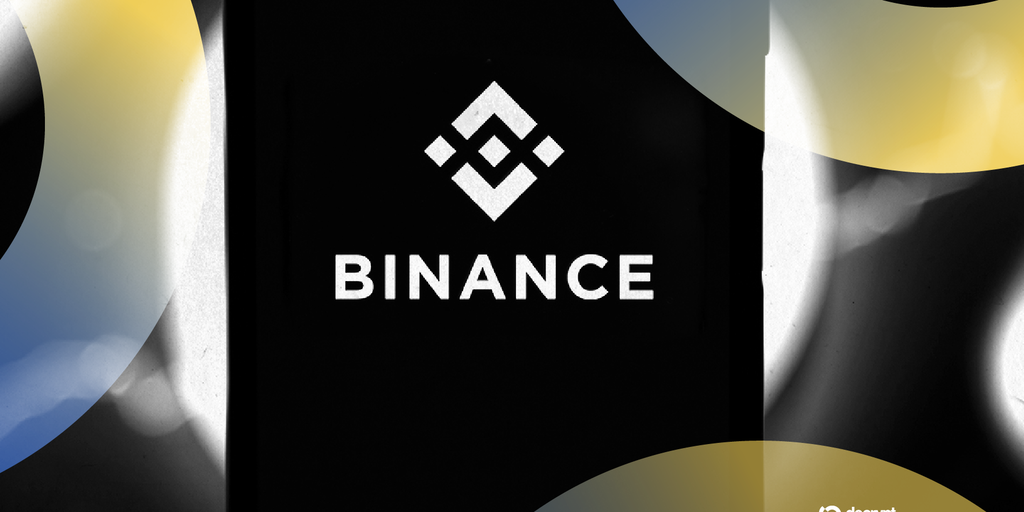In brief
- Binance will move its USDT yield product onto the Plasma network once mainnet launches, estimated for September.
- Users will be able to earn 2% APR on their USDT stablecoin holdings, as well as earn a slice of the soon-to-launch XPL token.
- Codenamed “Taylor Swift,” the partnership’s details were kept under lock and key with only a handful of Plasma employees knowing who the deal was with.
Binance is set to move its USDT yield product on-chain once the stablecoin network Plasma hits mainnet, which is targeted for September. On top of Binance’s usual yield, users can lock up funds before Plasma’s mainnet in exchange for a cut of its soon-to-launch XPL token.
In less than an hour, the $250 million deposit cap was reached on Binance. The limit may be raised, a Plasma representative told Decrypt, but the final decision remains with Binance.
Paul Faecks, the founder and CEO of Plasma, told Decrypt that he hopes the partnership will kickstart a network effect and establish it as the go-to chain for all things stablecoins.
The new global financial system relies on a deep and robust yield economy.
To reach that scale, distribution is everything. That’s why we are excited to announce our partnership with @Binance Earn to bring the first fully onchain yield product to hundreds of millions worldwide. pic.twitter.com/ECYPqIePgM
— Plasma (@PlasmaFDN) August 20, 2025
“You have 280 million people that have a Binance account, which is obviously a massive reach. And we’re really keen for all of those people to have the option to then use Plasma,” Faecks said. “The network effects that come with that are obviously incredibly useful to us, building out Plasma and truly making it reach millions of people globally.”
Once the XPL token generation event takes place, 1% of the token supply will then be split among the Binance depositors—even if the limit is raised. Plus, Binance users who deposit USDT will also earn an estimated 2% APR paid back in USDT.
USDT is the largest stablecoin in the world by market capitalization, issued by Tether. Stablecoins are cryptocurrencies that peg their price to stable assets, often fiat currencies, and in this case, the U.S. dollar. In doing so, it means that making profits on stablecoins is nearly impossible. Earning yield on stablecoins refers to earning a small percentage of interest on your tokens, often as a hedge against inflation.
Binance currently also offers on-chain yields for non-stablecoin assets like Bitcoin, Wrapped Beacon ETH, and BNB, although only BNB returns earnings in the deposited token.
Plasma’s partnership is ultimately a move to have Binance’s USDT yield generation take place on the Plasma network once it hits mainnet. Faecks confirmed to Decrypt that Plasma is planning for its token generation event and mainnet launch to take place in September.
Internally, Plasma runs a tight ship to ensure that partnerships and sensitive information don’t leak. As such, the Binance announcement was codenamed “Taylor Swift,” with only a handful of employees in its London office actually knowing the true meaning behind it… perhaps to the dismay of any Swifties in the 30-person team.
Plasma is aiming to build a Bitcoin sidechain that becomes “stablecoin chain number-one,” Faecks told Decrypt last month. Effectively, Plasma is focused solely on stablecoin optimizations, including stablecoin gasless transactions, private USDT transactions, and more.
It caused a stir in July as $500 million—which was later upped to $1 billion—was pre-deposited ahead of its XPL initial coin offering. Plasma also raised $24 million across its seed and Series A funding rounds in February with support from Tether CEO Paolo Ardoino, PayPal co-founder Peter Thiel, and investment firms including 6th Man Ventures. Ardoino and Thiel also serve as advisors to the project.
Interestingly, the yield-bearing USDT partnership comes after the passing of the landmark GENIUS Act in the U.S.. While it provided a framework for issuing stablecoins in the U.S., it also prohibited the offering of yield from stablecoin issuers. However, it did not prohibit third parties, such as Binance or Plasma, from offering yield-bearing products.
While Faecks declined to directly comment on specific regulations—beyond stating that he welcomes the “professionalization” of the industry—he did stress the importance of yield for stablecoins.
“I think it drastically reduces the opportunity cost in holding stablecoins,” Faecks explained. “You don’t have to give up any earnings potential of those stablecoins.”
“There’s a large cohort of people who are relying on stablecoins in their day-to-day life, and truly use it as their banking rails to an extent,” he added. “Yield is a massive component of that. It makes it a meaningfully more attractive product.”
Daily Debrief Newsletter
Start every day with the top news stories right now, plus original features, a podcast, videos and more.







